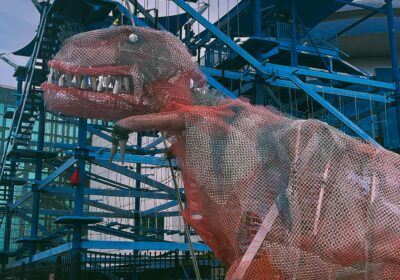USF reaches top with athletic upgrades
The largest number of NCAA Division I upgrades to athletics facilities in the past 25 years nationwide belongs to the new USF Athletics District, which opened its first project – the new baseball and softball stadiums – over the weekend.
Seven of USF’s athletic teams will see upgrades to their venues totaling about $33.5 million overall, said Jeremy Sharpe, assistant director of athletics.
“It’s the largest athletic construction project in terms of number of facilities built at one time, and it’s been a heck of a process,” said Bill McGillis, executive associate director of athletics. “It’s been very fast in terms of major construction.”
McGillis said all the money for the project was privately raised and came from “general athletic revenues” collected annually over time.
“No student fees and no state funding,” McGillis said. “It’s all private gifts, or it will come from the athletic operating budget.”
The upgrades as a whole, which will include improvements to baseball, softball, basketball, tennis, track, soccer and football facilities, began in June. The baseball and softball stadiums took a little more than eight months to complete.
The project budget also includes the construction of five new recreation fields to replace those that were cleared to make room for the new facilities.
“Other than Raymond James Stadium, which is not a University facility, every other facility that our student athletes were playing in and fans were visiting were inadequate by Division I standards,” McGillis said. “First and foremost, we need to provide first-class facilities for our athletes.”
Ray Gonzalez, assistant director of project management in the USF Facilities Planning and Construction office, said total construction costs in the Athletics District are $24 million. An additional $6 million was set aside for “soft costs,” which include things such as architects and engineers’ fees, permitting costs and equipment and furniture costs.
The remaining $3.5 million will be spent on building a new soccer stadium set to open this April next to the new baseball and softball stadiums.
Though the current soccer stadium, which also contains a running track, meets regulation qualifications, McGillis said it was not what the athletics department wanted for its students and fans. He said the new stadium will be for soccer only and the old stadium will be converted exclusively for track.
The baseball and softball stadiums, which are conjoining facilities, had their opening debuts this weekend, both seeing record attendance: baseball saw 3,126 fans and softball had 785. Each stadium has its own permanent batting cages and a video scoreboard.
McGillis said the scoreboards are some of the best in the country and provide a big “wow factor” for people. He said the boards will allow a “great fan experience” that will draw fans to the park and help generate more revenue through greater advertising and sponsorship.
“The architect that designed (the baseball and softball fields) said he wanted to put them together in one spot,” McGillis said. “The energy that we’ll have, I think, is unlike any other place in the country having both parks like this.”
McGillis said he hopes the new fields will increase student turnout at games.
“We are dedicating a whole section of seats (to students) behind the home dugouts for both baseball and softball,” he said.
The football program received $3.28 million to build three new practice fields, two of which are natural grass and one turf.
The men and women’s basketball programs are awaiting the completion of their new $9.53 million practice facility being added onto the Sun Dome. With the addition, the teams will no longer have to share one court for practices.
“It really limited our ability to rent out the Sun Dome for events, so it’s a poor practice environment. Plus, with no practice facility, it limited our ability to generate revenue,” McGillis said of the old basketball facilities. “Recruiting-wise, we were at a huge disadvantage in all of our sports.”
The five recreational fields and upgrades to the current tennis facility will cost $979,000.
“Our philosophy here needs to be that we create an incredible student environment because the energy from our students feeds everyone else in the stadium,” McGillis said. “This is the main thing, and I am positive that we are going to have that here.”







